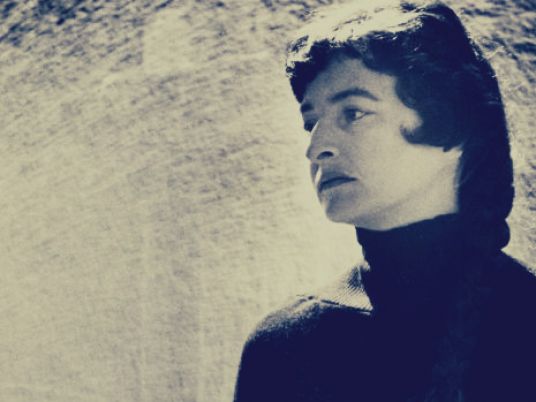
Celebrated Egyptian poet Joyce Mansour was a woman of the Nile and a French-speaking, Jewish poet that expressed her hidden mad desires.
Jean-Jacques Luthi, a French historian of the Surrealist movement in Egypt, described her poems: “The occultism of Jewish mysticism seems familiar to the poet. Her provocative violence surprises the reader. That violence is met with black irony."

Her poetic upbringing
Joyce Mansour was born on 25 July 1928 to an Egyptian Jewish family living in the United Kingdom. She moved to Cairo as a child and lived there for 28 years. She was Egypt’s champion in the 100 meter race and the high jump. She began writing poetry after World War II and attended the literary salon of poet Mary Kavadia in Zamalek, where she met the great surrealist poet George Hanin, who wrote about the richness and uniqueness of her poetry.
In 1956, she moved to Paris and became a member of the Surrealist movement. There, she wrote her poet “Screams.”
Iraqi poet Abdul-Qader al-Janabi, her friend and translator of her work into Arabic, says: “She speaks the language of a woman's body that has all provocative rights and openly breathes the air of pleasure.”
Raji Bathish also says about her: “Her poetic language draws pornography and dives into verbal obscenity.”

Her position on surrealism
The school of surreal art flourished in France in the second and third decades of the 20th century. It was characterized by a focus on all that is strange, contradictory and spontaneous. It aimed to release pent-up ideas, fantasies and dreams.
But Joyce Mansour avoided the lifestyle and attitudes of the Surrealists. She never raised the slogan of political revolution nor opposed the capitalist society. However, she hosted the implementation of the commandments of Marquis de Sade.
She was also completely away from politics in Egypt, as she was only interested in the poetic revolution.
Palestinian poet Raji Bathish says about her: “Desire for her is not abstract. It is the crux. It is a tool that re-evaluates the relation of the self with the world. She dreams of a desire that has no limits. It is the antithesis of pornography. She does not bother with promiscuity. She relays pleasure and pain in a tangible but not descriptive way. She gives voice to the barbarism of love, pleasure and emotional torment.”

Joyce the strange
She did not attend salons in Paris, although she had many friends. She had a luxurious life in beautiful Parisian neighborhoods. She was beautiful and had a great body that she fitted with the latest fashionable clothes.
Looking at her hair, you might perceive a violent woman, yet she had a quiet married life and raised two children. She admits that she is strange. Janabi says “she possesses sufficient experiences that make her a rebel without pretension and creative without indecency, even if a deprived sees indecency in her poems.”

Her married life
She married Henry Naggar in 1947 of when she was 19 years old, but he died of a chronic disease six months later. Two years after her first marriage, she met Egyptian businessman Samir Mansour, who offered her marriage, provided that she becomes fluent in French, which she became. They had two children and she split her time between Cairo and Paris.
She was a friend of André Breton from the first day she moved to Paris until his death in 1966. And he was fascinated by her. With Breton, she collected artifacts and contemporary paintings.

Her last days
Not a moment of her life passed without her thinking about death. Raji Bathish says: “Death was hovering above her hair from the first to the last poem she wrote, as if she knew that she would be sick and die.”
She died of cancer on 27 August 1986, the same disease that killed her mother.
Edited translation from Al-Masry Al-Youm
